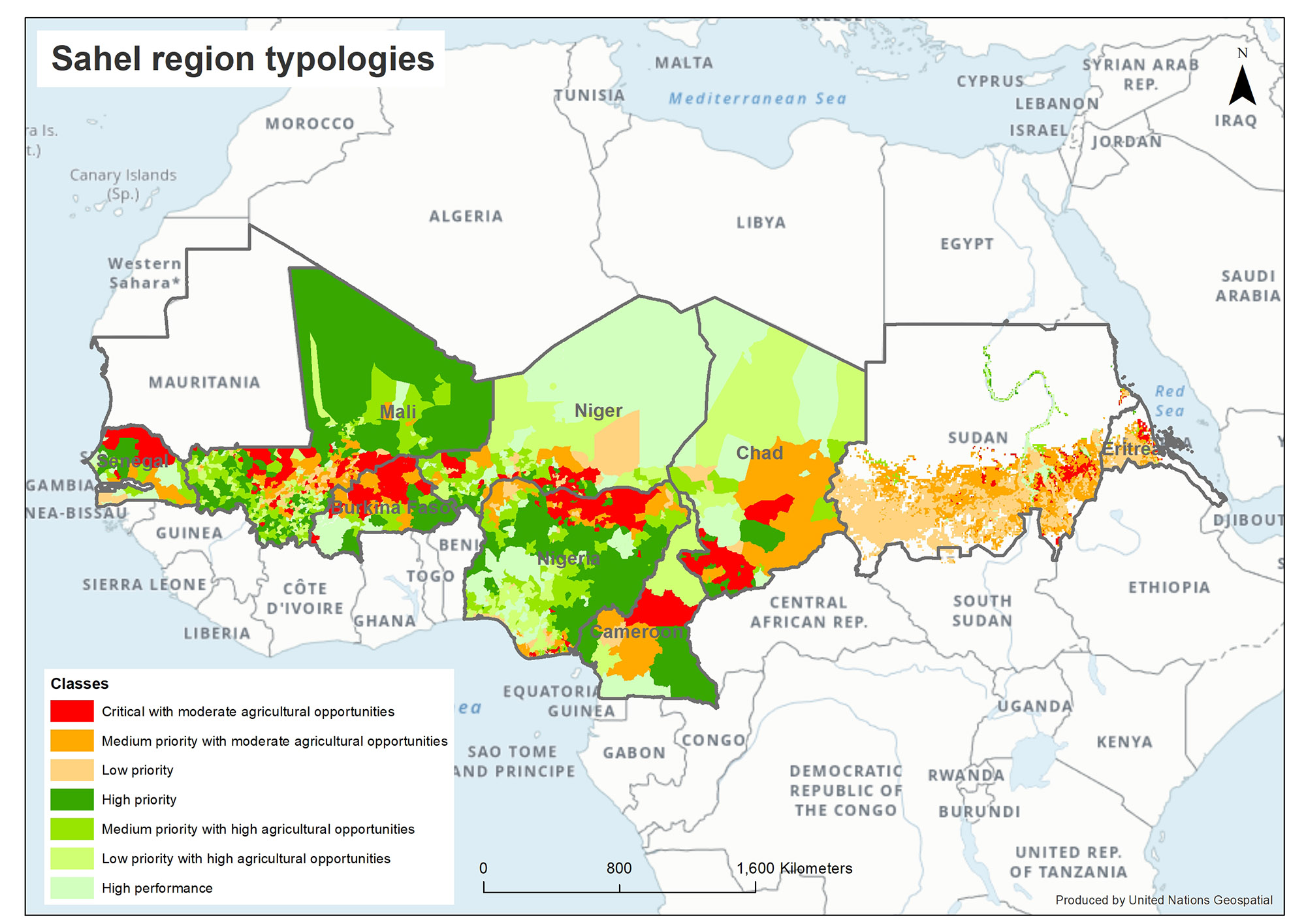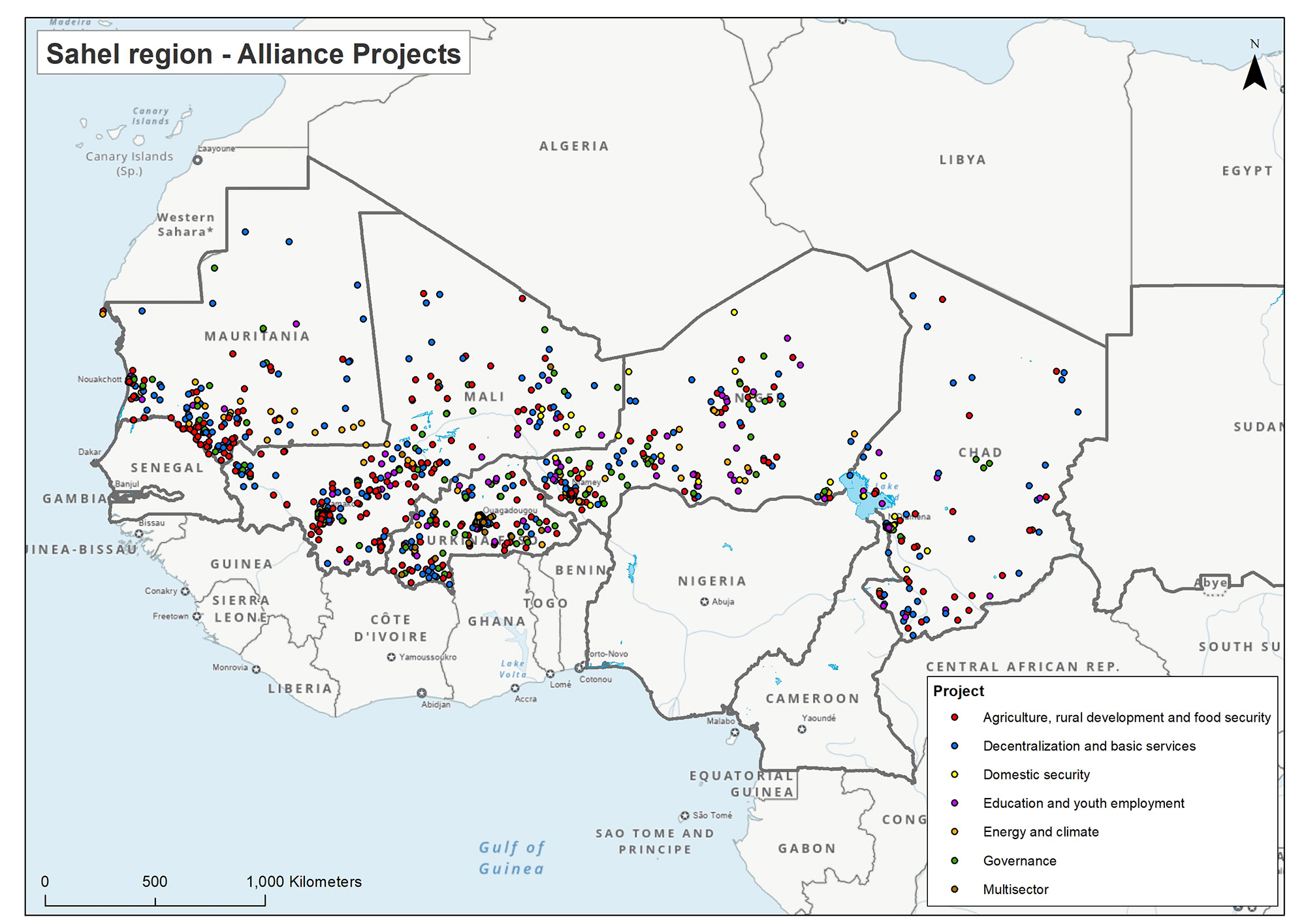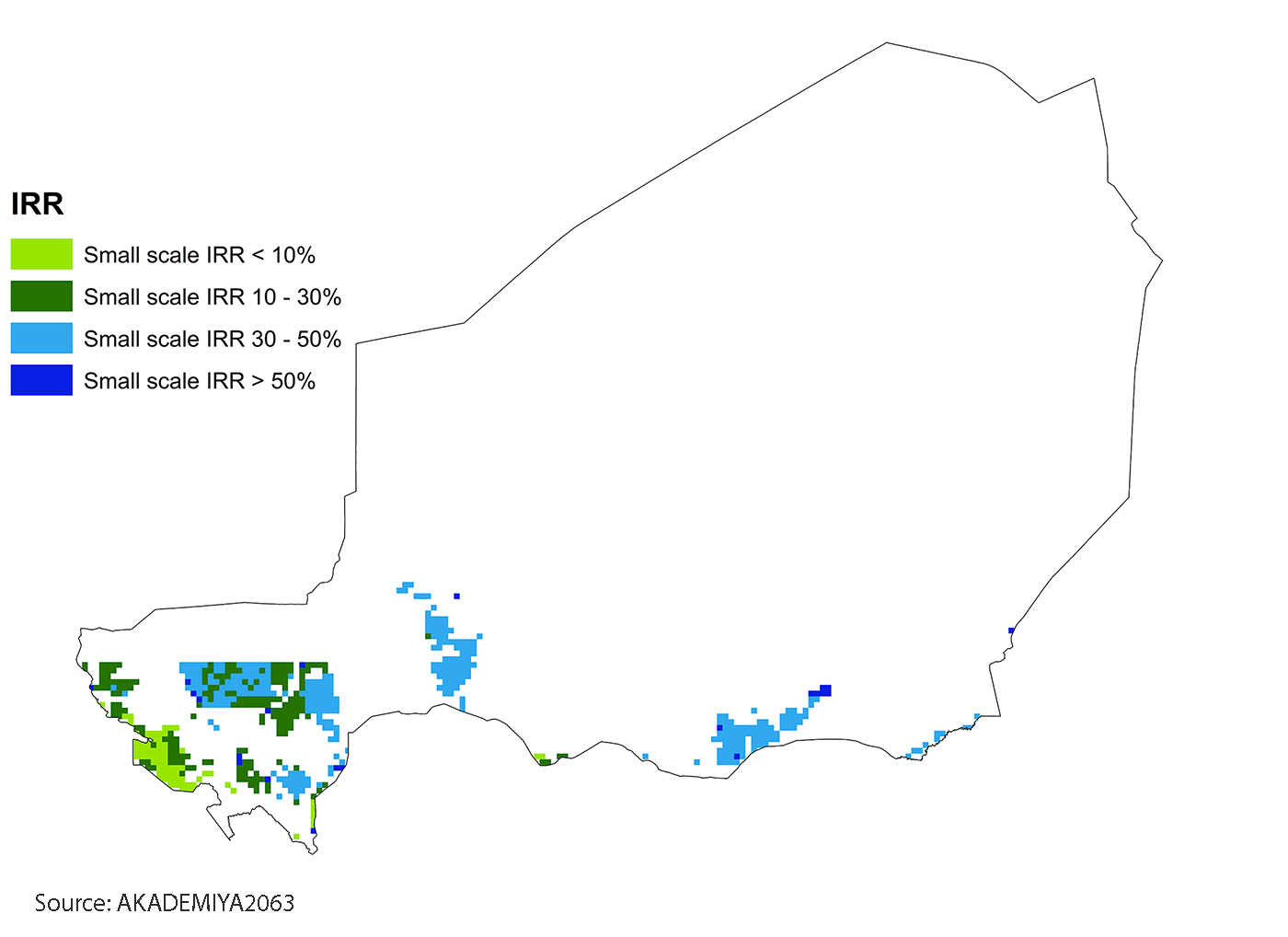Regional Initiative for the Sahel |
THE PROPOSAL
The Sahel is a region with significant environmental, political, and social challenges. It is also endowed with abundant natural and human resources, offering tremendous potential for sustainable growth. The Hand-in-Hand Initiative facilitates partnerships and investments to accelerate the transformation of agrifood systems in the region.
Based on lessons learned, three pillars for action have been identified:
- Improve water management and governance
- Transform agriculture through innovation to protect and enhance productive assets on land and build resilience
- Strengthen national and regional institutional capacities by using data and advanced analytics for decision-making
The UN's Integrated Strategy for the Sahel, with governance, resilience, and security as its pillars, is a key programmatic entry point for the Hand-in-Hand Initiative's engagement in the region. Additionally, the investment plans for Economic Community of West African States (ECOWAS) and the Common Market for Eastern and Southern Africa (COMESA), developed with FAO's support, facilitate the Hand-in-Hand Initiative's engagement in the Sahel. Finally, the SD3C, a joint programme for the Sahel in response to Covid-19, conflict, and climate change, also support the HIH Initiative's work in the region.
The core elements of the HIH Initiative in the Sahel is to complement and capitalize ongoing efforts of national governments, regional bodies, and development partners. It amplifies the existing efforts to direct resources on where they can have maximum impact.

The Sahel Alliance Projects and the HIH Initiative
Currently the Initiative's task force team is working with nine countries in the regions: Burkina Faso, Cameroon, Chad, the Gambia, Guinea, Senegal, Mali, Niger, and Nigeria. Investment priorities have been identified in Burkina Faso, Mali, and Niger.
The Initiative targets regions with high rates of poverty and untapped potential for commercially oriented value chain development, including processing and storage facilities, and e-commerce and digital services in agrifood systems.
Interventions Supported by the HIH Countries
Burkina Faso
- Approach: PNIASP (or National Strategic Plan for Agro-Sylvo-Pastoral Investments)
- Target regions: Centre-Est, Centre-Ouest, Est, Sud-Ouest
- Value chains: Rice, corn, peanut, black-eyed pea, sesame, bovine, sheep, porcine, goat
Guinea
- Approach: Twin-track approach of national strategy for value-chain development and diversification of food systems
- Targeted regions: Gabu, Oio, Biombo
- Value chains: Cashew, fishery, local agriculture, forestry, small livestock
Mali
- Approach: Establishment of two pilot agricultural growth zones
- Target regions: Koulikoro, Kayes
- Value chains: Polyculture, market gardening, livestock and meat sector
Niger
- Approach: Agriculture value chain development and Digital Villages Initiative (pilot)
- Target regions: Tahoua, Dosso
- Value chains: Onion, dairy
Nigeria
- Approach: Dual approach of resilience building for emergency and priority value-chain development
- Target regions: Katsina, Borno, Zamfara, Sokoto,Yobe, Kano, Ogun, Kwara, Osun, Oyo
- Value chains: Rice, sorghum, soybean, maize, fish, tomatoes, cassava, dairy
Ghana and Liberia
- Approach: Digital Villages Initiative
- Targets: TBD
- Value chains: TBD
Senegal
- Approach: Digital Villages Initiative
- Targets: 100 villages in Niaye, Senegal river, Anambe
- Value chains: fruits, vegetables, grains
Returns to farmers are assessed to be significant, contributing to reduction of poverty and inequality and improvement in food security.
Even though the Sahel has abundant renewable water resources, they are not being used. As such, water supply is unevenly distributed and difficult to access and manage. There is lack of infrastructure. Accessibility is on the decline due to climate change. These obstacles translate into low agricultural productivity, highest yield gaps on the continent, and persistent food insecurity. Through the Hand-in-Hand Initiative, investment priorities on water management have been decided.

ACTORS AND ACTIVITIES
Small-Scale Irrigation Systems in Burkina Faso and Niger
In the two countries, Burkina Faso and Niger, scalable technologies, good practices, and investment pathways to expand irrigation adoption among smallholder farmers have already been identified through a project called “Pro-Sahel Innovations and Technologies in Small-Scale Irrigation Systems for Smallholder Farmers in the Sahel.”
Four types of scalable water collection and extraction technologies by smallholder farmers have been identified:
- Pedal pumps
- Motor pumps
- Small tanks
- Community river diversion project

Burkina Faso has a formal irrigation strategy implemented between
2004 and 2015, which increased the irrigated area from 32,000 hectares
in 2004 to 77,000 in 2019. Still small-scale irrigation systems are
uncommon. The intervention would cover four out of the country's 13
regions in Boucle du Mouhoun, the Centre-Ouest, the Hauts-Bassins and
the North.
Eight crops have been selected for this purpose: sugarcane, maize, onion, tomato, French bean, potato, pepper, black-eyed pea. Irrigated systems would increase the average productivity of the crops from 1,656 kg/ha to 3,414 kg/ha.
With an investment US$19,373 per hectare, with the goal of covering a total of 3.2 million hectares of land, a total of US$58 billion is sought for investment. This would benefit 37.8 million people in rural areas, with around 321,000 people leaving poverty. The internal rate of return is estimated to be 16%.
Niger has 11 million hectares of land with irrigation potential. The country has low labour productivity in agriculture, while demand for food crops produced using small-scale irrigation systems is high. The areas identified for the intervention are in the four regions in the west, mainly in Tillabery and Dosso.
The following 10 crops have been selected to grow using irrigation techniques: onion, tomato, cabbage, garlic, cassava, potato, wheat, maize, pepper and moringa. It is estimated that the average productivity of these crops with irrigated systems could increase from 568 kg/ha to 1,783 kg/ha.
With an investment of US$7,433 per hectare, with the goal of covering 373,000 hectares of land, the total investment required is US$2.8 billion. It is estimated that this would benefit 4.6 million people in rural areas, lifting 648,612 people out of poverty. The internal rate of return is estimated to be 27%.


- See the investment plan slide deck presentation on the Sahel and the Annex.
- See the concept note for the special consultation session on the Sahel, "Scaling-Up Capacity, Partnerships and Investment to Accelerate Agrifood Systems Transformation in the Sahel."
- See the agenda for the Sahel session on 18 October 2022.

